Natural or synthetic? Vinyl or latex? Abrasion or non-abrasion?
Truth be told, there are many choices of hand protection gloves in the market, and we believe there is THE PERFECT material suitable for your need. Choosing the right material is an arduous task which requires careful research and consideration. Understanding the differences amongst materials that are available is the first step to helping you make informed decisions in choosing the right ones.
Hand protection gloves are only as good as the quality of their material. Modern technology and innovative design have made safety gloves amazingly durable to withstand the challenges every worker faces in the job site. These gloves can be made from as different materials as polyurethane, flat nitrile, sandy nitrile, neoprene and more.
Each material however has its own set of advantages and disadvantages. The first thing to decide is to identify which type of material to go for. This guide reviews today’s commonly used materials and why safety managers would choose them.
Generally, there are 2 type of materials used in a glove: Natural and Synthetic.
Natural Materials
Natural materials can be the following:
- This material can be used as all-purpose gloves from gardening to industrial use (i.e. janitorial, movers, landscaping and mechanical). It is 100% biodegradable, naturally UV resistant and affordable. When used in coating it can offer strong grip in both wet and dry conditions, and more importantly can reduce hand fatigue when used for extended periods.
- Material is naturally breathable, is lightweight as well as durable and affordable. Gloves in the cotton range is useful for around-the-house or workplaces where people serve food, handle photographs and cleaning. It can keep hands clean and offer protection against abrasion but it is not strong enough for work involving rough or sharp objects.
- It is made from rubber and therefore natural, making it the preferred material for safety gloves that are used in the medical and industrial fields. It fits like second skin with a high level of touch sensitivity, can be strong and elastic. Because of this, it can be good for extended periods of time but can work well in situations that involve infectious materials. Plus, it is bio-gradable.
- This material is generally used in welding because of its ability to offer resistance against sparks, moderate heat, cuts and abrasions. More on the material later.
Synthetic Materials
Synthetic materials vary. Gloves can be made from one of the following:
Polyurethane (PU). This is an elastic material that has excellent anti-friction qualities making it one of the most popular materials ever used to the point that it could replace leather gloves in manufacturing plants. It is extremely flexible as it is can be thin and straight. In addition, the coating provides users with a good grip.
Neoprene. This type of material is a synthetic chloroprene rubber, is flammable but more durable than natural rubber. It has the chemical stability and elasticity within a wide temperature range. It is because neoprene contains millions of pores (air gaps) in which air is heated to human body temperature and therefore has good heat-protective qualities. Material is resistant against oil and solvents.
Nitrile. It is a synthetic acrylonitrile and butadiene polymer or rubber. Gloves made from this material are meant for people who easily get allergies from latex gloves. Nitrile is actually 3x more resistant to punctures than latex and even vinyl and is considered “medical grade”. Production processes can prove that they can be compared to latex with respect to comfort. It is durable, elastic and adaptable to any hand shape.
There are different kinds of nitrile: flat nitrile, sandy nitrile, foam/sponge nitrile, micro nitrile and extra grip (XG) nitrile. The flat nitrile has high resistance to abrasion, with a tacky finish and superior dry grip. Sandy nitrile has great abrasion resistance, more elastic and form fitting compared to other nitrile coatings. The foam/sponge nitrile coating is chemically foamed, softer and more flexible than the flat nitrile variant. Micro nitrile is thinner than nitrile foam and has slightly tacky finish. Then the extra grip (XG) nitrile is free from solvents. Its safe nitrile coating offers excellent grip and dexterity.
Vinyl. This material is popular in the food & beverage sector and in situations where protection is less priority. It can be less durable making it less expensive.
PVC. This material performs well in temperatures from 25 to 150 degree Fahrenheit. It is useful in alcohols and glycol ethers but not aldehydes, ketones, aromatic hydrocarbons, halogen compounds, heterocyclic compounds or nitro compounds. What’s more, it offers economical resistance against oils, acids, fats and petroleum hydrocarbons in addition to abrasion resistance.
Kevlar. Material is an actual para-aramid fibre, making gloves to be durable, lightweight and flexible. Its tensile resistance is 5x higher than steel, as well as heat resistant up to 370-degree Celcius. In addition, Kevlar is non-flammable and extremely resistant to cuts.
Let’s talk about Leather
Earlier in this article, leather is mentioned as one natural material for manufacturing safety gloves. It is also classified into different types:
- This is considered the strongest and most durable type of leather, excellent for providing dexterity. The natural lanolin in the skin can make the gloves soft, waterproof and abrasion resistant.
- It is the most common and popular leather type but durable enough for protection against abrasions. It is warmer than a goatskin or pigskin and heat resistant.
- The leather in deer is softer, more comfortable and flexible than cowhide. It can be the warmest amongst leather types.
- This leather provides more breathability than other leather skins. It is softer with regular use, and can handle moisture without becoming hard. This is launderable without losing shape or function.
It is important to note what part of the animal’s body the hide comes from and what side of the skin that is processed. Full grain leather comes from the external side of the hide. The leather cut from the sides and shoulder of the animal provides the user with the highest durability ever. The split leather comes from underside of the hide. And because it does not have natural grain, it is not as durable as grain. For longest life, it is recommended to use the full grain leather.
Are your work gloves OEKO-Tex 100 and REACH Compliant?
After talking about the type of materials used in every safety glove, it is essential that it is manufactured with the highest level of safety standards possible. These gloves undergo testing such as the Standard 100 by OEKO-Tex and REACH Compliance.
Is it free of silicon?
While silicon has long been used in manufacturing as it makes for an excellent lubricant and release agent, its presence can contaminate and be an adversary to adhesion. The result? Surface defects and poor quality finish. It is important to purchase gloves that are free from silicon to minimise the risks of contamination. But how does one ensure that the product is free from it? Enter the testing standards of Standard 100 by OEKO-Tex and REACH.
These tests set the highest demand for selecting the suitable safety gloves meant for working with hazardous substances.
Testing Standards For Solvent-Free Manufacturing
The Standard 100 by OEKO-Tex is a global independent testing and certification for raw, semi-finished and finished textile products at all levels of processing as well as the accessory materials being used. It ensures high and effective safety of the product, putting it to various laboratory tests and product classes to check harmful substances such as silicon. Once the product passed, it is now published to be free from harmful substances, dermatology-tested for skin compatibility.
REACH (Registration, Evaluation, Authorisation of Chemicals) is designed to protect human health and environment by assessing the risks found in the glove. When chemical substances are registered, the details must be given about its potential hazards. Earning REACH compliance ensures that the use of chemicals has the lowest possible risk for people and the environment.
Our Safety Gloves are made from the finest materials and are certified of REACH and OEK-TEK.
They can be for a wide variety of applications which include
- General purpose
- Mechanical
- Maintenance
- Oil & Gas
- Waste & Recycling
- Glass
- Automobile
- Building & Construction
THE SAFETY GLOVES
HexArmor 2070 (Touchscreen)
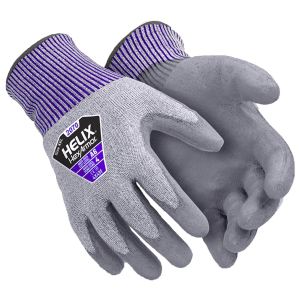
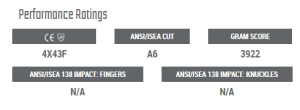
- Knit: Innovative 13-gauge HPPE, fiberglass, and steel blend shell offering 360° degree cut protection
- Coating: Flexible polyurethane palm coating provides superior grip and abrasion resistance
- Knit wrist helps prevent dirt and debris from entering the glove
- Touchscreen capabilities
HexArmor 1070
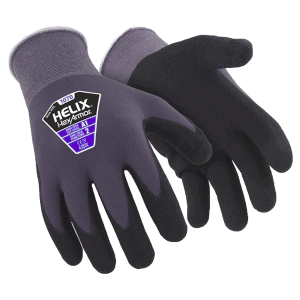
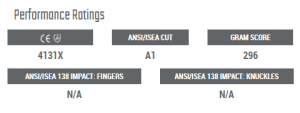
- Knit: High-performance nylon/Spandex blend shell offering 360° degree cut protection
- Coating: Microfoam nitrile palm coating provides superior grip and abrasion resistance
- Seamless construction for enhanced comfort and breathability
- Knit wrist helps prevent dirt and debris from entering the glove
- Silicone-free
Granberg 114.0944 (Touchscreen)

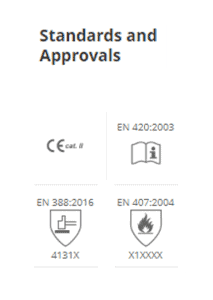
- Recommended when operating with Touch Screen Devices.
• Great oil grip, wet grip, and dry grip.
• Excellent abrasion resistance combined with dexterity and breathability.
•The patented micro-capillary nitrile foam technology.
Granberg 107.8888
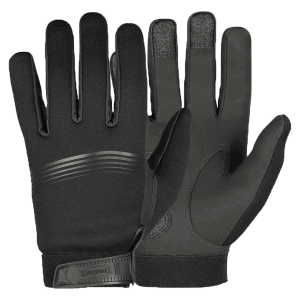
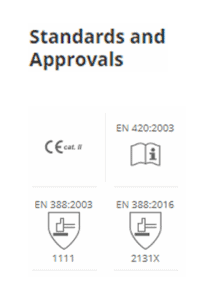
- Flexible
• Good grip and high touch sensitivity
• Reinforced fingertips and reinforced palm for added durability
• Water repellent, elastic neoprene on the back of hand
• Machine washable. Drip dry
Granberg 116.0995
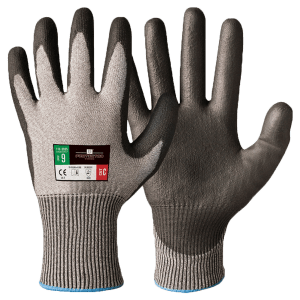
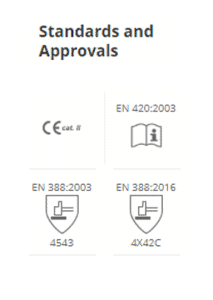
- Highly durable.
• Excellent protection against cuts and punctures.
• Good touch sensitivity.
• Economical version.
Granberg 116.548
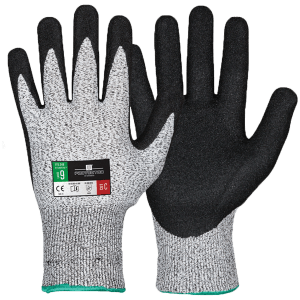
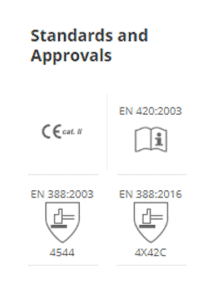
Especially abrasion and tear resistant.
• Great protection against cuts and punctures.
• Fitted with great touch sensitivity.
• Typhoon® is one of the strongest fibres in the world.
HexArmor 1092

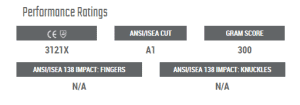
- Knit: High-performance 15-gauge nylon blend shell offering 360° degree cut protection
- Coating: Flexible foam nitrile palm coating provides superior grip and abrasion resistance
- Knit wrist helps prevent dirt and debris from entering the glove
- Safe Finger Release (SFR) Technology for use while operating hand held screw driving tools
- Silicone-free
Possible applications for the Helix® 1092 glove are workplaces where handheld pneumatic or electrical screwdrivers are used, including:
- Hand held power tools
- Screwdrivers
- Rivet drivers
HexArmor 2085
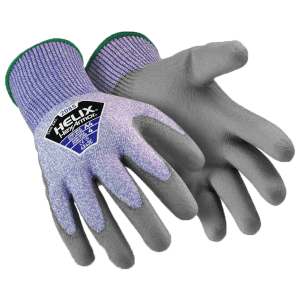
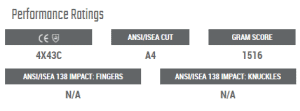
- Knit: 13-gauge HPPE and fiberglass blend shell offering 360° degree cut protection
- Coating: Flexible polyurethane palm coating provides superior grip and abrasion resistance
- Knit wrist helps prevent dirt and debris from entering the glove
- Silicone-free
OTHER LEVELS
Granberg 116.549
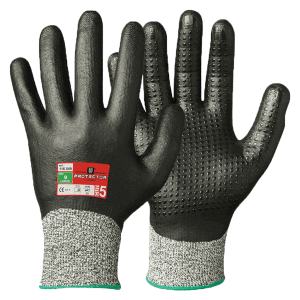
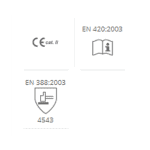
- Highly durable.
• Provides high cut resistance.
• Lycra®in the liner as well as the elastic nitrile foam coating provide outstanding flexibility and fit.
• Designed for dry and oily environments.
EN 407 – THERMAL RISK PROTECTION RATING
Granberg 116.559
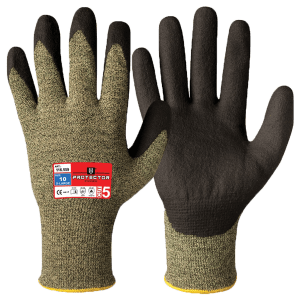
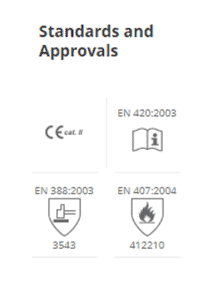
• Durable.
• Flame and cut resistant liner made of mixed Kevlar®, aramid, glass and polyester yarns.
• Neoprene coating ensures great dry grip and sound wet grip.
• Arc flash approved to Level 1, with an Arc Thermal Performance Value (ATPV) of 7.7 cal/cm2.
• Sanitized® treated to prevent bacteria growth and promote freshness.
Have you found the perfect gloves?
Even with the finest material, protective gloves will wear out over time and eventually have to be replaced. However choosing the best material offers longer life and is more cost efficient.
Find out what safety gloves have the above mentioned coating in the best safety gloves.

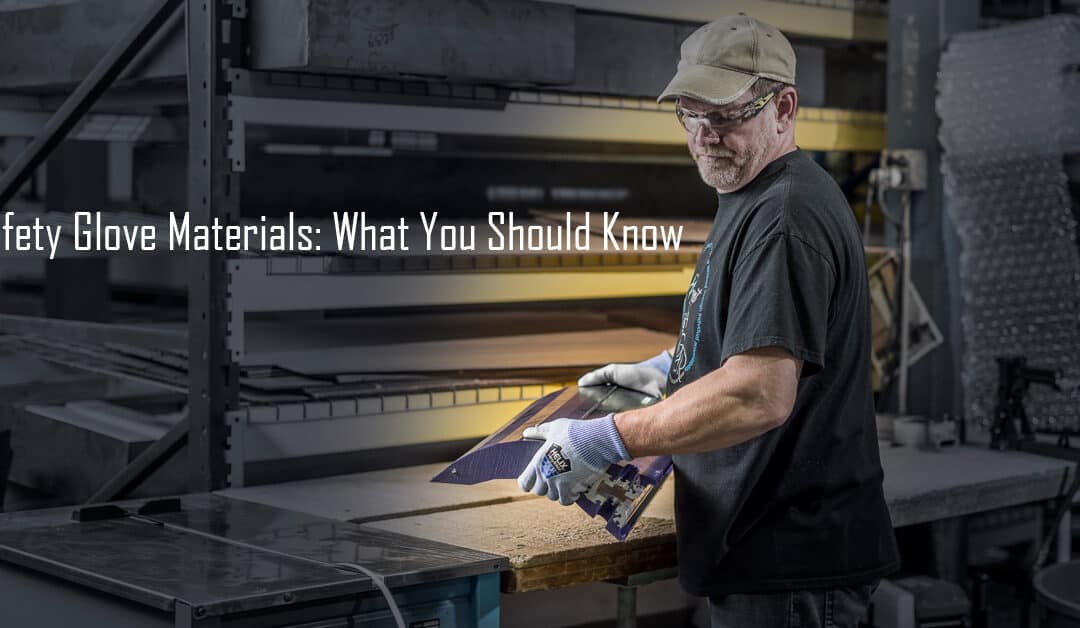

Recent Comments